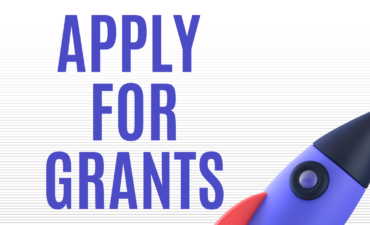Introduction: 5 Key Steps to Crafting a Winning Research Protocol, Research protocols play a pivotal role in shaping the trajectory of scientific inquiry, serving as foundational documents that guide the design, implementation, and evaluation of research studies. In the dynamic landscape of academic and scientific exploration, a well-constructed research protocol serves as a road map, providing a systematic framework for researchers to follow. This introductory section aims to underscore the critical importance of research protocols in the realm of academia and beyond. By offering a concise overview of their significance, we delve into the fundamental role these protocols play in ensuring the validity, reliability, and ethical conduct of studies. As researchers embark on their investigative journeys, the careful crafting of a research protocol becomes the cornerstone for generating impact and meaningful contributions to the body of knowledge in diverse fields.
Let us begun the journey for 5 Key Steps to Crafting a Winning Research Protocol
This point is the right time to discuss the role of a research protocol in designing impact studies, this where you develop a sound base in becoming a researcher
To comprehend the significance of a research protocol in designing impact studies, it is essential to recognize the multifaceted roles it assumes throughout the research process. This section delves into the nuanced responsibilities of a research protocol, emphasizing its pivotal role in enhancing the quality and efficacy of studies.
- Guiding Structure:
- The research protocol serves as a comprehensive blueprint, outlining the structure and methodology of the study. It provides a clear road-map that researchers can follow, ensuring a systematic and organized approach to data collection, analysis, and interpretation.
- Ensuring Rigor and Reproducibility:
- By establishing standardized procedures and methodologies, a research protocol contributes to the rigor of the study. This not only enhances the credibility of research findings but also enables other researchers to replicate the study, fostering a culture of transparency and scientific reproducibility.
- Ethical Framework:
- A crucial aspect of the research protocol is its role in delineating ethical considerations. It outlines the measures in place to protect participants, ensuring that studies are conducted with integrity and respect for the rights and well-being of individuals involved.
- Risk Mitigation:
- Research protocols anticipate potential challenges and risks that may arise during the study. By addressing these proactively, protocols contribute to effective risk management, minimizing the likelihood of pitfalls that could compromise the study’s outcomes.
- Enhancing Impact and Contribution:
- Through a well-constructed research protocol, studies are positioned to make meaningful contributions to their respective fields. By providing a robust foundation, protocols empower researchers to generate insights that have a lasting impact on scientific knowledge, policy development, and societal progress.
Understanding the multifaceted role of a research protocol is pivotal for researchers aiming to design studies that not only meet rigorous standards but also leave a lasting imprint on their academic or professional domains.
5 Key Steps to Crafting a Winning Research Protocol
In the below article I will reveal the secrets of 5 Key Steps to Crafting a Winning Research Protocol
Step 1: Defining the Research Question
Importance of a clear and focused research question
The foundation of any impactful research study lies in the formulation of a clear and focused research question. This initial step plays a pivotal role in shaping the trajectory of the entire research process. Several key aspects underscore the importance of a well-defined research question:
- Guiding the Research Process:
- A clear research question serves as a compass, guiding researchers through the intricate journey of investigation. It directs the focus of the study, helping researchers stay on course and avoid unnecessary diversions, ensuring that the study remains purposeful and relevant.
2. Facilitating Precision and Clarity:
- Clarity in the research question is paramount for precise study design and execution. It delineates the specific aspects or variables under investigation, providing a road map for researchers to structure their methodologies and analyses with a sharp focus.
- Enhancing Feasibility:
- Well-defined research questions contribute to the feasibility of a study. Researchers can better plan and allocate resources when the objectives and scope of the research are clearly articulated, minimizing the risk of scope creep and ensuring that the study remains within practical bounds.
- Enabling Reproducibility:
- The formulation of a clear research question facilitates the reproducibility of the study by providing a standardized starting point. When other researchers attempt to replicate the study, a precisely formulated research question ensures consistency and comparability, contributing to the overall reliability of scientific endeavors.
- Connecting with Significance:
- A focused research question enables researchers to delve into specific phenomena or issues, aligning the study with broader scientific or societal significance. This connection enhances the potential impact of the study, as findings can directly contribute to addressing gaps in knowledge, informing policies, or advancing understanding in a particular field.
In essence, the importance of a clear and focused research question cannot be overstated. It not only shapes the path of the research journey but also sets the stage for a study that is methodologically robust, practically feasible, and capable of making meaningful contributions to the academic or professional landscape.
Tips for formulating question a research question with impact (5 Key Steps to Crafting a Winning Research Protocol)
Crafting a research question with impact requires careful consideration and thoughtful planning. The formulation of the research question is a crucial step that significantly influences the entire research endeavor. Here are some essential tips to ensure your research question is impactful:
- Clarity and Precision:
- Ensure that your research question is clear, concise, and precisely defines the scope of your study. Avoid ambiguity to provide a focused direction for your research.
- Relevance to the Field:
- Align your research question with current debates, gaps in knowledge, or emerging trends in your field. A question that addresses relevant issues is more likely to contribute to the existing body of knowledge.
- Test ability and Feasibility:
- Formulate a question that is testable through empirical research. Consider the practical aspects of your study, including the availability of resources, time constraints, and ethical considerations.
- Originality and Innovation:
- Strive for originality by asking a question that adds a new perspective or innovative angle to existing discussions. A novel research question has the potential to captivate the interest of the academic community.
- Consideration of Variables:
- Clearly identify the key variables or factors that your research question aims to investigate. This clarity is essential for designing a robust research methodology and analyzing the results effectively.
- Stakeholder Impact:
- Reflect on how your research question might impact stakeholders, whether they are academics, practitioners, policymakers, or the general public. Understanding the potential implications of your study adds depth to your research question.
- Formulation Iteration:
- Be prepared to iterate and refine your research question as you delve deeper into the literature and preliminary research. Adjustments may be necessary to ensure the question remains relevant and aligned with your objectives.
- Avoiding Assumptions:
- Steer clear of assumptions in your research question. Instead, focus on formulating a question that encourages unbiased exploration and analysis, allowing the data to guide your conclusions.
- Broad to Specific:
- Start with a broader question and progressively narrow it down. This stepwise approach helps in developing a research question that is neither too broad nor too narrow, striking a balance that is conducive to in-depth exploration.
- Peer Review and Feedback:
- Seek input from peers, mentors, or experts in your field. External perspectives can provide valuable insights and help refine your research question.
By incorporating these tips into the formulation of your research question, you enhance the likelihood of creating a focused, impactful, and meaningful study that contributes to the advancement of knowledge in your chosen field.
5 Key Steps to Crafting a Winning Research Protocol
Step 2: Literature Review and Gap Analysis
- Significance of reviewing existing literature
Conducting a thorough literature review is a cornerstone in the research process, playing a pivotal role in shaping the trajectory of a study. The significance of reviewing existing literature cannot be overstated, and it serves several crucial purposes in the research protocol:
- Contextual Understanding:
- A comprehensive literature review provides researchers with a contextual understanding of the current state of knowledge in their field. This foundational knowledge is essential for situating the study within the broader academic landscape.
- Identification of Gaps:
- Through a meticulous review of existing literature, researchers can identify gaps, inconsistencies, or areas where current knowledge falls short. Recognizing these gaps is instrumental in defining the research’s unique contribution and originality.
- Refinement of Research Question:
- The literature review process aids in refining the research question by exposing researchers to different perspectives, methodologies, and findings. It allows for the adjustment and fine-tuning of the research question to ensure its relevance and significance.
- Methodological Insights:
- Examining the methodologies employed in previous studies offers valuable insights for designing the research methodology. Researchers can learn from the strengths and limitations of past approaches, guiding the selection of appropriate research methods for their own study.
- Building a Conceptual Framework:
- Literature review contributes to the construction of a robust conceptual framework for the study. It helps in establishing the theoretical foundation, defining key concepts, and framing the relationships between variables.
- Avoiding Redundancy:
- By understanding what has already been explored, researchers can avoid redundancy and ensure that their study adds genuine value to the existing body of knowledge. This awareness is crucial for maintaining the originality and significance of the research.
- Critical Evaluation:
- Engaging critically with existing literature allows researchers to evaluate the quality and reliability of previous studies. This critical perspective is essential for building a strong rationale for the chosen research approach.
- Support for Hypotheses or Research Questions:
- The literature review provides a basis for formulating hypotheses or refining research questions. It offers evidence or theoretical support for the expected outcomes of the study, grounding the research in established knowledge.
- Enhancing Credibility:
- Referencing reputable and relevant sources enhances the credibility of the research. It demonstrates that the study is informed by a comprehensive understanding of the subject matter and is situated within the broader academic discourse.
- Integration of Diverse Perspectives:
- Researchers can integrate diverse perspectives and theoretical frameworks from existing literature, enriching the depth and complexity of their study. This integration contributes to a more holistic and nuanced exploration of the research topic.
In summary, a meticulous literature review is not merely a precursor to research but a fundamental step that shapes the research process. It provides the intellectual foundation, refines the research focus, and positions the study within the evolving landscape of scholarly inquiry.
5 Key Steps to Crafting a Winning Research Protocol
- Conducting a thorough gap analysis to identify research opportunities
In the process of crafting a winning research protocol, conducting a thorough gap analysis is a critical step that goes hand in hand with the literature review. This step is indispensable for identifying research opportunities and ensuring that the proposed study makes a meaningful contribution to the existing body of knowledge. Here’s a breakdown of the role and key considerations when conducting a gap analysis:
- Definition of Research Gaps:
- Clearly articulate what constitutes a research gap in the context of the study. This involves understanding where the current literature falls short, what questions remain unanswered, and which areas require further exploration.
- Alignment with Research Objectives:
- Ensure that the identified research gaps align with the overall objectives of the study. The gaps should be relevant to the research question and contribute to the overarching goals of the research.
- Identification of Unexplored Areas:
- Look beyond the obvious gaps and seek areas that have received limited attention in previous research. These unexplored areas present opportunities for original contributions and novel insights.
- Consideration of Methodological Gaps:
- Assess not only the content gaps but also methodological limitations in existing studies. Identifying methodological gaps opens avenues for refining the research methodology and addressing potential shortcomings in study design.
- Integration with Literature Review:
- Integrate findings from the gap analysis seamlessly with the existing literature. Clearly demonstrate how the identified gaps build upon or challenge current knowledge, providing a logical progression from the literature review to the research objectives.
- Justification for Research Significance:
- Clearly justify why addressing the identified gaps is significant for the field. Articulate how filling these gaps will contribute to the advancement of knowledge, practical applications, or theoretical frameworks.
- Consideration of Emerging Trends:
- Stay attuned to emerging trends or developments in the field that may not be fully captured in existing literature. Incorporating these considerations ensures the research remains current and relevant.
- Cross-disciplinary Insights:
- Explore potential gaps from a cross-disciplinary perspective. Sometimes, innovative solutions or perspectives emerge when insights from different disciplines are synthesized.
- Stakeholder Perspectives:
- Consider the perspectives of relevant stakeholders, including practitioners, policymakers, or the community affected by the research. Understanding their needs and perspectives can highlight gaps that are of practical significance.
- Feasibility and Scope:
- Assess the feasibility and scope of addressing identified gaps within the constraints of the study. Ensure that the research is realistically positioned to make a meaningful contribution without overreaching.
In essence, conducting a thorough gap analysis is about strategically positioning the research within the existing landscape, identifying areas ripe for exploration, and justifying the significance of the proposed study. This step enhances the precision and impact of the research protocol, setting the stage for a study that not only addresses gaps but also pushes the boundaries of knowledge in a meaningful way.
Step 3: Designing the Methodology
- Selecting the appropriate research design
The methodology is the backbone of any research study, and selecting the right research design is a pivotal aspect of this process. A well-chosen research design not only aligns with the research question but also ensures the reliability and validity of the study. Here’s an exploration of the role of research design and considerations for selecting the appropriate one:
- Understanding Research Design:
- Provide a clear understanding of what constitutes a research design and its significance in shaping the overall study. Highlight that the research design serves as the blueprint for data collection, analysis, and interpretation.
- Alignment with Research Question:
- Emphasize the importance of aligning the chosen research design with the specific characteristics of the research question. Different types of questions (e.g., exploratory, explanatory, descriptive) may require different designs (e.g., experimental, observational, case study).
- Types of Research Designs:
- Briefly introduce common types of research designs, such as experimental, correlational, descriptive, and mixed-methods designs. Provide a concise overview of each type and its suitability for different research scenarios.
- Quantitative vs. Qualitative Approaches:
- Explore the distinction between quantitative and qualitative research approaches. Highlight that the choice between these approaches depends on the nature of the research question, the type of data needed, and the depth of understanding required.
- Experimental Design Considerations:
- If applicable, delve into considerations specific to experimental designs, including the establishment of control groups, randomization, and manipulation of variables. Emphasize the need for rigor in experimental studies.
- Observational Design Considerations:
- For observational designs, discuss the importance of careful observation, selection of participants, and ethical considerations. Highlight how observational studies provide insights into real-world behaviors.
- Case Study Design Considerations:
- If the research leans towards a case study design, outline considerations for selecting cases, data collection methods, and the role of context in case study analysis. Illustrate the depth of understanding achievable through this design.
- Mixed-Methods Approach:
- Introduce the concept of a mixed-methods approach, where both quantitative and qualitative data are collected and analyzed. Emphasize the complementary nature of these methods in providing a comprehensive understanding of the research question.
- Practical Considerations:
- Address practical considerations such as resource constraints, time limitations, and the availability of participants. Acknowledge that the chosen research design should be feasible within the constraints of the study.
- Pilot Studies:
- Advocate for the importance of pilot studies to test the viability of the chosen research design. Highlight how pilot studies contribute to refining data collection instruments and identifying potential challenges before the full-scale study.
- Ethical Considerations:
- Stress the ethical considerations associated with the chosen research design. Discuss issues related to participant consent, confidentiality, and the responsible conduct of research.
By guiding researchers through the process of selecting an appropriate research design, this step ensures that the methodology is robust, ethically sound, and capable of providing meaningful insights into the research question. The chosen design becomes the framework through which data is collected and analyzed, laying the groundwork for a successful and impactful study.
5 Key Steps to Crafting a Winning Research Protocol
- Choosing the right data collection methods and tools
Selecting the most appropriate data collection methods and tools is a critical aspect of crafting a winning research protocol. This step ensures that the data gathered is not only relevant to the research question but also reliable and valid. Here’s an in-depth exploration of the considerations and strategies for choosing the right data collection methods and tools:
- Understanding Data Collection Methods:
- Provide an overview of common data collection methods, including surveys, interviews, observations, experiments, and existing data analysis. Highlight the strengths and limitations of each method.
- Alignment with Research Design:
- Emphasize the importance of aligning data collection methods with the chosen research design. Different designs may require specific methods to gather quantitative or qualitative data effectively.
- Quantitative Data Collection:
- Discuss quantitative data collection methods such as surveys and experiments. Explore the process of designing structured surveys, creating clear measurement scales, and implementing controlled experiments to ensure the reliability of quantitative data.
- Qualitative Data Collection:
- Explore qualitative data collection methods, including interviews, focus groups, and observations. Highlight the role of open-ended questions, thematic analysis, and the immersion of the researcher in the study context to capture rich, contextual data.
- Combining Methods – Mixed-Methods Approach:
- Introduce the concept of a mixed-methods approach, where both quantitative and qualitative data are collected. Explain how this approach provides a more comprehensive understanding of the research question and triangulates findings for robust conclusions.
- Sampling Strategies:
- Discuss various sampling strategies relevant to the chosen data collection methods. Cover topics such as random sampling, stratified sampling, and purposive sampling, emphasizing their appropriateness based on the research objectives.
- Data Collection Tools:
- Explore the variety of tools available for data collection, including surveys conducted through online platforms, interview guides, observation protocols, and experimental apparatus. Highlight the importance of selecting tools that suit the research context and participants.
- Technological Advances:
- Discuss how technological advances, such as online surveys, mobile data collection apps, and sensor-based technologies, can enhance the efficiency and accuracy of data collection. Emphasize the need to stay abreast of technological tools that align with the research goals.
- Validity and Reliability:
- Stress the significance of ensuring the validity and reliability of data collection methods. Provide guidance on establishing face validity, content validity, and test-retest reliability, depending on the nature of the data being collected.
- Pilot Testing:
- Advocate for the importance of pilot testing data collection instruments. Explain how pilot testing helps identify and address potential issues, refine questions, and enhance the overall quality of data collection.
- Ethical Considerations:
- Discuss ethical considerations associated with data collection, including informed consent, privacy protection, and transparency in reporting. Emphasize the researcher’s responsibility to uphold ethical standards throughout the data collection process.
By navigating researchers through the intricacies of choosing appropriate data collection methods and tools, this step ensures that the data collected is robust, relevant, and ethically obtained. It lays the foundation for generating high-quality data that will contribute to the overall success and impact of the research study.
Step 4: Ethical Considerations
- Addressing ethical concerns in research
Ensuring ethical considerations are integrated into every phase of a research study is paramount to maintaining the integrity and credibility of the research process. In this section, we delve into the key aspects of addressing ethical concerns in research:
- Informed Consent:
- Highlight the significance of obtaining informed consent from participants. Discuss the elements of informed consent, including the purpose of the study, potential risks and benefits, confidentiality measures, and the voluntary nature of participation.
- Protection of Participants:
- Emphasize the researcher’s responsibility to prioritize the well-being of participants. Discuss strategies for minimizing potential harm, ensuring participant anonymity, and implementing safeguards, particularly when dealing with sensitive topics.
- Privacy and Confidentiality:
- Explore the importance of protecting participants’ privacy and maintaining confidentiality. Provide guidelines on anonymizing data, securing storage, and using coding systems to dissociate individuals from their responses.
- Conflict of Interest:
- Address the issue of conflict of interest and its potential impact on research integrity. Discuss how researchers should transparently disclose any affiliations, financial interests, or personal biases that may influence the study.
- Research with Vulnerable Populations:
- Discuss the additional ethical considerations when conducting research with vulnerable populations, such as children, elderly individuals, or those with diminished autonomy. Highlight the need for additional safeguards and consent procedures.
- Compliance with Regulations:
- Stress the importance of researchers adhering to relevant ethical guidelines, institutional review board (IRB) requirements, and national or international regulations. Provide examples of commonly accepted ethical codes, emphasizing their role in promoting responsible research practices.
- Transparent Reporting:
- Encourage transparent reporting of research methods and findings. Discuss the importance of accurately representing the study design, data collection procedures, and results to ensure the reproducibility and reliability of the research.
- Dealing with Data:
- Provide guidance on responsible data management, storage, and sharing. Discuss the researcher’s responsibility to maintain data integrity, securely store information, and share data in accordance with ethical standards and legal requirements.
- Community Engagement:
- Explore the concept of community engagement in research. Discuss how researchers can collaborate with communities, involve stakeholders, and communicate findings in a manner that respects and benefits the community.
- Continuous Ethical Reflection:
- Emphasize the need for continuous ethical reflection throughout the research process. Encourage researchers to revisit ethical considerations at each stage, especially when facing unforeseen challenges or changes in the research landscape.
By addressing ethical concerns comprehensively, researchers contribute to the responsible conduct of research, fostering trust among participants, peers, and the broader community. This commitment to ethical standards enhances the credibility and impact of the research, ensuring that the knowledge generated is not only valid but also ethically sound.
5 Key Steps to Crafting a Winning Research Protocol
Ensuring participant confidentiality and informed consent
- Importance of Informed Consent:
- Discuss the foundational role of informed consent in research ethics. Highlight that obtaining voluntary; informed consent is an ethical imperative and a legal requirement. Explain the elements of informed consent, including the purpose of the study, potential risks and benefits, confidentiality measures, and the right to withdraw.
- Transparent Communication:
- Emphasize the need for transparent and clear communication during the informed consent process. Researchers should provide information in a language accessible to participants, ensuring they fully comprehend the nature and implications of their involvement in the study.
- Respecting Autonomy:
- Stress the principle of respecting participants’ autonomy. Explain that individuals have the right to make decisions about their participation without coercion or undue influence. Researchers should create an environment where participants feel free to ask questions and seek clarification.
- Special Considerations for Vulnerable Populations:
- Acknowledge that additional considerations are necessary when obtaining informed consent from vulnerable populations, such as children, elderly individuals, or those with diminished autonomy. Discuss tailored approaches to ensure comprehension and voluntarism.
- Confidentiality Safeguards:
- Detail the measures in place to protect participant confidentiality. This includes anonymizing data, assigning code numbers, and securing storage to prevent unauthorized access. Emphasize the researcher’s commitment to preserving the privacy of participants throughout and after the study.
- Privacy Measures in Data Collection:
- Discuss how privacy is maintained during data collection. Whether through surveys, interviews, or observations, researchers should outline the steps taken to minimize intrusiveness and uphold the confidentiality of participants’ responses.
- Handling Sensitive Information:
- Address the ethical handling of sensitive information. When dealing with potentially stigmatizing or private details, researchers must assure participants that their data will be treated with the utmost sensitivity and will not be disclosed in a manner that could harm their well-being.
- Secure Data Management:
- Provide guidance on secure data management practices. Researchers should outline how data is stored, who has access to it, and the duration for which it will be retained. This ensures that participant information is handled responsibly and in accordance with ethical standards.
- Continuous Monitoring and Adaptation:
- Emphasize the importance of continuous monitoring and adaptation of confidentiality measures. Researchers should regularly assess potential risks to confidentiality and adjust strategies accordingly, particularly when unforeseen challenges arise.
By prioritizing informed consent and confidentiality, researchers demonstrate a commitment to ethical research conduct. This not only safeguards participants’ rights but also contributes to the overall integrity and reliability of the research findings.
Step 5: Writing a Comprehensive Research Protocol
- Structuring the protocol for clarity and completeness
Let’s get you started; here is a research protocol structure you can play with in your journey, Seize the opportunity to craft a protocol that not only meets standards but sets new ones, marking your unique imprint on the academic landscape. Your journey begins here – read, absorb, and let the spirit of innovation guide your every stroke.
Key elements to include in a well-crafted research protocol
- Introduction:
- Provide an overview of the research, emphasizing its significance and context. Clearly state the research question and objectives.
- Background and Rationale:
- Present a thorough review of existing literature, highlighting the gaps and justifying the need for the proposed study. Establish the context for the research.
- Objectives and Hypotheses:
- Clearly articulate the research objectives and, if applicable, hypotheses. Define the expected outcomes and how they contribute to addressing the research question.
- Study Design:
- Outline the chosen research design and methodology. Explain the rationale behind the selection and how it aligns with addressing the research objectives.
- Participants and Sampling:
- Define the target population and the sampling strategy. Provide details on inclusion and exclusion criteria. Justify the chosen sample size.
- Data Collection Methods:
- Describe in detail the methods and tools used for data collection. Address how the chosen methods align with the research objectives.
- Data Analysis Plan:
- Provide a clear plan for data analysis, including statistical methods if applicable. Explain how the analysis will answer the research question.
- Ethical Considerations:
- Discuss the ethical considerations, including how participant confidentiality and informed consent will be ensured. Detail any potential risks and how they will be mitigated.
- Timeline:
- Present a realistic timeline for the completion of different phases of the research. Include milestones and deadlines.
5 Key Steps to Crafting a Winning Research Protocol
- Budgetary Considerations:
- If applicable, provide a budget for the research. Break down expenses related to participant compensation, data collection tools, analysis software, etc.
- Potential Challenges and Solutions:
- Anticipate potential challenges that may arise during the research and propose solutions. This demonstrates foresight and preparedness.
- Significance and Contribution:
- Conclude by reiterating the significance of the study and how it contributes to existing knowledge in the field. Discuss potential real-world applications or implications.
- References:
- Include a comprehensive list of references cited throughout the protocol. Follow a consistent citation style.
- Appendices:
- Attach any supplementary materials, such as survey questionnaires, interview guides, or consent forms.
By structuring the research protocol with clarity and completeness, researchers provide a roadmap for themselves and others to understand and replicate the study. This not only enhances the rigor of the research but also contributes to the credibility and impact of the findings.
In the domain of rigorous research, the research protocol assumes a pivotal role, serving as the meticulous blueprint for orchestrating profound investigations. As one navigates through the intricacies delineated above, perceive the protocol not as a rigid template but as a dynamic framework awaiting the imprint of your scholarly ingenuity.
Embrace the latitude for refinement, for each nuanced adjustment infuses vitality into your scientific inquiry. Your odyssey through the nuanced landscape of research protocols signifies an intellectual evolution, and with each iteration, you refine your skills as a discerning architect of scholarly endeavors.
Transcend conventional paradigms, challenge preconceptions, and let your research protocol exemplify the boundless potential that emerges at the intersection of inventive thinking and scholarly precision. 5 Key Steps to Crafting a Winning Research Protocol
Related Good Reads, Link
Hey, STEAL our Best Premium Content For Absolutely Free, Check Out the Links below
HOPE these will add value to your existing skills and knowledge
Our information bears no cost (it’s absolutely FREE), don’t let valuable information slip away.
Join our community of avid readers who are always in the know. Subscribe to our website; stay connected and engaged with the latest news, trends, and developments by subscribing today.
(PUSH the bell ICON)
Leverage the power of knowledge to propel your organization to new heights. Don’t miss out to explore our content
- Latest Funds for NGOs,
- NGO Jobs
- Resources (Helpful Guides and Courses)
- Premium Resources
- NGO related articles
Empowering Humanity through Funds, Resources and Collective Action
Sharing is Appreciated









